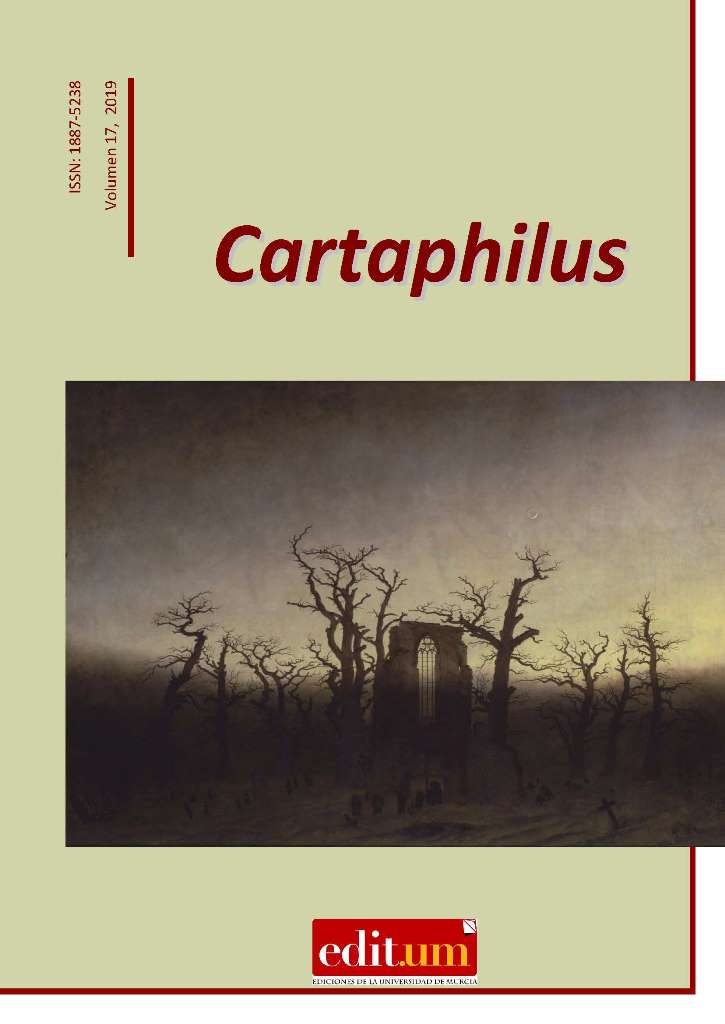The outside side. Idea of the history in "Historia argentina" of Rodrigo Fresán
Abstract
The objective of this work is to reflect on the categories of thought through which it is a question of apprehending the history in the book, hybrid between story and novel, Historia argentina, by Rodrigo Fresán, from an analysis of the narrative forms through those that build the stories, since the structure of the work, by way of stories that work by resonance, reflects the way in which history is conceived. To do this, I fundamentally start form the ideas of Ricardo Piglia about the relationship between politics and literature, for whom fiction reproduces the language of the State and creates its reverse. And I also turn to the theories of Eloy Fernández Porta, studied in Afterpop, to demarcate the way in which the use of pop references in this work responds to a critique of the forms of official culture. Therefore, the objective of this work is the analysis of the revision of the language with which Argentine history has been articulated, and the search for another language to write and apprehend in Argentine history, taking as a central idea the concept of distancing, since it figures the attitude, both emotional and intellectual, regarding the writing of history.
Downloads
-
Abstract1375
-
pdf (Español (España))975
References
BIBLIOGRAFÍA
BAJTÍN, M. (1989). Las formas del tiempo y del cronotopo en la novela. Teoría y estética de la novela. Madrid: Taurus, 237-409.
BIBLIA (1971). Biblia de Jerusalén. Madrid: Alianza.
BAUMAN, Z. (2012). Daños colaterales: desigualdades sociales en la era global. México: Fondo de Cultura Económica.
BUSTOS, G. (2002). Enfoque subalterno e historia latinoamericana: nación, subal-ternidad y escritura de la historia en el debate Mallon Beverley. Fronteras de la Historia, (7).
CIRLOT, J. E. (1969). Diccionario de símbolos. Barcelona: Labor.
DE OLIVEIRA, F. P. (2006). Teoría del periodismo. Sevilla: Comunicación Social.
DILLEHAY, T. D. (2007). Monuments, empires, and resistance: the Araucanian polity and ritual narratives. Cambridge University Press.
DUNN-MASCETTI, M. (2008). Diosas: la canción de Eva. Ediciones Robinbook.
LUENGO, Enrique. Poder y resistencia y reacción en Hechos consumados de Juan Radrigán. Latin American Theatre Review 32.2 (1999): 69-86. Radrigán
FLETCHER, A. (2002). Alegoría. Ediciones AKAL.
RABANALES, A. (1984). ¿Qué es hablar correctamente? Revista de educación, 119, 49-58.
RADRIGÁN, Juan. El loco y la triste. Santiago: LOM, 2005.
REVERT, Vicente (2001). Del contacto entre el español chileno y el mapudungun o lengua de los mapuches. Contacto interlingüístico e intercultural en el mundo hispano, 1, 337.
RILEY, E. C., & Montoya, E. T. (1990). Introducción al Quijote. Barcelona: Crítica.
SIMMEL, G. (2002). La metrópoli y la vida mental [Die Grossstädte und das Geis-tesleben]. Sobre la individualidad y las formas sociales, 388-403.
SPIVAK, Gayatri (1999). ¿Puede hablar el sujeto subalterno?. Trad. José Amícola. Revista Orbis Tertius 6: 175-235
SUBERCASEAUX, Bernardo (1997). Historia de las ideas y de la cultura en Chile. Santiago de Chile: Editorial Universitaria.
TALENS, J., ROMERA, J., & Tordera, A. (1988). Elementos para una semiótica del texto artístico. Madrid: Cátedra.
WOLFF, Egon (1978). Flores de papel. Teatro. Santiago de Chile: Editorial Nasci-miento.
Works published in this journal are subject to the following terms:
1. The Servicio de Publicaciones of the University of Murcia (the publisher) reserves the copyright of the published works and encourages and allows their reuse under the usage licence indicated in point
© Servicio de Publicaciones, Universidad de Murcia, 2015
2. Works are published in the electronic edition of the journal under a Creative Commons Reconocimiento-NoComercial-SinObraDerivada 4.0 International licence (legal text). They may be copied, used, disseminated, transmitted and publicly displayed, on condition that: i) the author and original source of the publication are cited (journal, publisher and URL of the work); ii) the material is not used for commercial purposes; iii) the existence and specifications of this licence for use are mentioned.

3. Self-archiving conditions We allow and encourage authors to electronically disseminate the preprint versions (the pre-review version) and/or post print (the version that has been reviewed and accepted for publication) of their works before they are published as this encourages earlier circulation and dissemination and so a potential increase in their citation and impact in the academic community.




